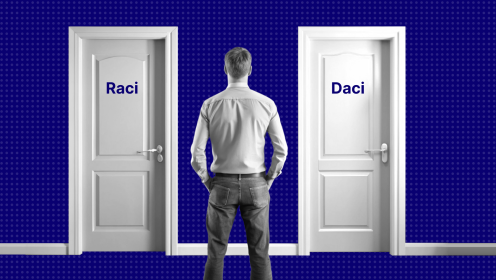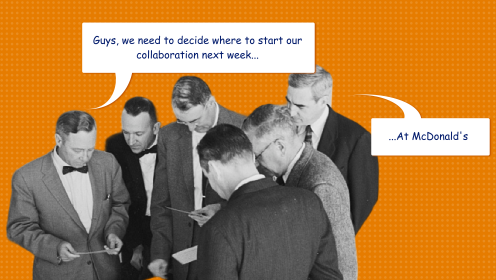It's easier to work when you know what's expected of you and when your boss understands the boundaries of your tasks. We've already discussed how to navigate the organizational structure, and today we'll focus on organizing the work process for employees.
What is a Job Description and Why is it Important
📌 A job description is essentially an agreement between an employee and the organization. It outlines the tasks and responsibilities that an employee is expected to perform at work.
This document serves as an internal guideline for the company, listing the rights and duties associated with a particular role. While it might seem mundane, it can be crafted in a flexible format. That's why it might be referred to by different names—some may call it a job regulation, others a list of duties—but the core purpose remains the same.
Like any other internal policy, a job description is a valuable tool. It clarifies work responsibilities, protects employees from taking on additional tasks outside their role, and can even help resolve disputes if they arise.
Job descriptions are sometimes viewed as unnecessary bureaucracy. However, any signed document is legally binding and can be used to resolve disputes, whether through legal means or informal discussions. Therefore, it’s wise for companies to draft a clear document outlining the duties and responsibilities for their employees.
Who Should Draft Job Descriptions
✔️ Human Resources (HR). Job descriptions are typically part of the document package provided by HR when onboarding a new employee. This is convenient because the entire set of documents is prepared for the new hire, and HR is well-versed in company policies and regulations.
✔️ Legal Team. Involving lawyers ensures that the job description aligns with legal requirements. While there’s a risk that the document may become too generic if based solely on legal norms, their involvement is crucial if the job description is meant to serve as a legally binding document.
✔️ Manager. The manager is the person who best understands what is required from the employee in their specific role. Unlike HR, the manager is familiar with the unique aspects of the position.
✨ The ideal scenario is when the job description is drafted by the manager in collaboration with the employee, then reviewed by HR to ensure it aligns with company policies, and finally, vetted by the legal team to ensure it complies with broader legal standards.
Once the document is signed by all parties, it becomes legally binding and can be used to resolve disputes if necessary.
Types of Job Descriptions
Standardized Job Descriptions
These are used when there are two or more employees in the same position within a team. For example, if there are three accountants or ten seamstresses, it's more efficient to create a single job description for all of them.
This approach saves time that would otherwise be spent explaining the requirements to each individual. Standardized job descriptions ensure that all employees with the same role have the same tasks and expectations, leading to a consistent approach to their work.
Individualized Job Descriptions
These are created for each employee individually. This type of job description is particularly relevant for small teams or specialized roles. Individualized job descriptions are more flexible and can account for specific details of the job, minor nuances in tasks, and potential variations in responsibilities.

Structure of a Job Description
As mentioned earlier, job descriptions are mandatory in many public institutions, and they often follow strict formatting standards. However, it's not always necessary to adhere to a rigid format. The key is to follow general guidelines, such as dividing the document into sections and ensuring the content is well-organized and easy to read.
Here’s an example of a typical job description structure:
Title
Format: Job Description for {Job Title}.
General Information
This section includes the job title, the overall purpose of the role, required education and experience, and the position’s place within the company’s organizational structure.
Example: Sales Department Designer at a large company, with a completed higher education degree and 2 years of experience. The role's purpose is to develop design elements, reporting to the Lead Designer.
Job Responsibilities
This is the main part of the job description, where specific expectations and tasks are outlined.
Example: the designer is responsible for the full cycle of product visual creation—selecting references, preparing wireframes, creating highly detailed mockups, and developing clickable prototypes.
Employee Rights
While basic rights are usually covered in the employment contract, this section should detail work hours, payment specifics (e.g., hourly rate), available resources, and other nuances.
Example: working hours from 9 AM to 6 PM with a 30-minute lunch break, 28 days of vacation, a monthly salary, and a dedicated workstation with a computer.
Employee Responsibilities
This section outlines the areas and outcomes for which the employee is accountable.
Example: responsible for traffic growth, timely product releases, or creative developments.
Storing Job Descriptions
Typically, job-related documents are created in two copies: one for the employee and another for their personnel file in HR.
Since the onset of COVID-19, online document storage has become more common, whether in a company's local computer network, in the cloud, or within a knowledge base. This method is both convenient and eco-friendly 🍃
Cloud Storage and Knowledge Bases
✔️ WEEEK. In the Knowledge Base, you can create folders for departments or projects and organize documents within them. For example, create an HR folder, with a branch for "Job Descriptions," and then store individual documents within it.
✔️ Google Drive. Create folders based on categories and group Google Docs with job descriptions within them.
✔️ Dropbox. A great tool for collaborative document storage, with the ability to organize files into folders.
✔️ Notion. Another excellent tool for storing and sharing documents. Its hierarchical structure allows you to easily organize various documents.
✔️ OneDrive. Microsoft's cloud storage service allows you to create folders and store documents securely, with easy sharing options.
Document Management Systems (DMS)
✔️ Confluence. A specialized system for creating knowledge bases and storing documents..
✔️ SharePoint. A comprehensive ecosystem for creating and storing web pages and documents.
✔️ M-Files. A flexible and powerful DMS that allows for easy document storage, management, and compliance tracking.
HR Platforms
Specialized HR platforms are also suitable for storing job descriptions, in addition to managing personnel:
✔️ BambooHR
✔️ Workday
✔️ Zoho People
✔️ ADP Workforce Now
Frequently Asked Questions
- Who signs and approves the job description?
A job description typically requires two signatures: one from the new employee and one from the individual responsible for approving internal policies, usually the manager. The responsible person should be identified according to the organization’s bylaws.
- How long should job descriptions be kept?
There is no universally mandated retention period for internal policy documents, so job descriptions generally do not have a specific retention period. It's advisable to keep them for as long as they are relevant to the employee's role.
- How can changes be made to a job description?
To modify a job description, both the employee and the manager must agree on the new responsibilities. If these changes affect the employment contract, the agreement must be documented in writing. Once consent is obtained, a new job description can be prepared.
- When should a job description be updated?
Updating a job description is common, especially in dynamic organizations. Changes are appropriate when an employee is promoted, takes on new responsibilities, or when there are significant changes in the workflow. It’s better to update the document than to rely on verbal agreements.
- How many copies of the document should be made?
Typically, two copies of the job description are created: one for the employee and one for the HR department. This ensures that both parties can easily reference the agreed-upon terms.
Key Takeaways for the Busy Reader
✔️ A job description isn't mandatory, but it offers protection for both employees and employers.
✔️ It can be formatted flexibly, as long as it clearly defines the role, responsibilities, rights, and accountability.
✔️ Avoid including generic phrases, filler content, or copied regulations. The job description should clarify roles, not complicate them.















